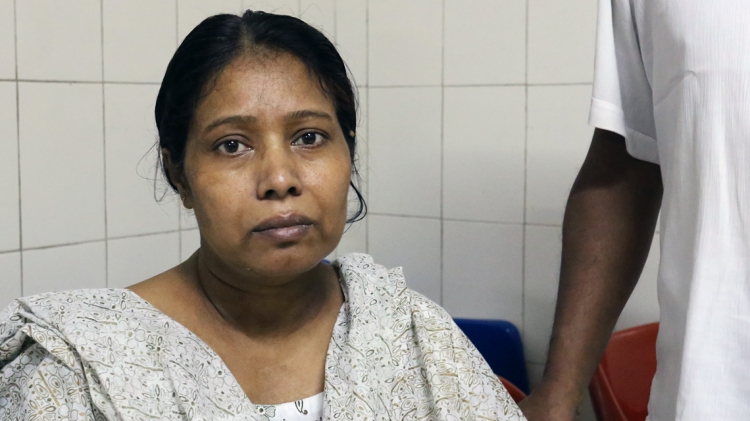Dhaka, Bangladesh — The number of people who can affordably access diagnostic medical care in Bangladesh has increased three times over the last ten years, as the country has expanded and strengthened its nuclear medical services. Health officials have worked steadily, with the support of the IAEA, to build a nuclear medicine system with well-trained medical staff, advanced imaging tools and a cost-effective source of essential radiopharmaceuticals.
“I came today because this is a very nice facility, but also because it is the most affordable option,” said A. Chowdhury, following a medical scan of her kidneys at the National Institute for Nuclear Medicine and Allied Sciences (NINMAS) in Dhaka one sunny afternoon last month. “Without this kind of public hospital, I don’t know how I would have been able to get this help.”
NINMAS, recently renovated, is one of the 15 publicly-funded nuclear medicine centres established in the last twenty years around Bangladesh. It carries out more than 60 000 nuclear medicine procedures (see The Science box) each year in the areas of oncology, cardiology, nephrology and cerebral studies. It also provides therapeutic services for thyroid conditions such as cancer, thyrotoxicosis and eye diseases, like pterygium and cancer.
Publicly-funded centres like NINMAS play an important role for Bangladesh’s 170 million people, particularly for the quarter of the population who live below the poverty line.
“Cost is extremely important for people in Bangladesh. If we didn’t provide subsidized care like we do here at NINMAS, many people would not be able to get the care they need,” said Raihan Hussain, Head of the Nuclear Cardiology and positron emission tomography (PET)/computed tomography (CT) Division at NINMAS.
A renal scan, like the one Chowdhury received, is a simple procedure in nuclear medicine that allows doctors to evaluate the condition and function of a patient’s kidneys, explained Hussain. “In a private practice this type of procedure costs at least five times as much as at NINMAS.”
Since its establishment, NINMAS has worked with IAEA experts to procure equipment, receive training and pursue research to further enhance and refine patient care. Its doctors now also teach medical students.
Cost is extremely important for people in Bangladesh. If we didn’t provide subsidized care like we do here at NINMAS, many people would not be able to get the care they need.









